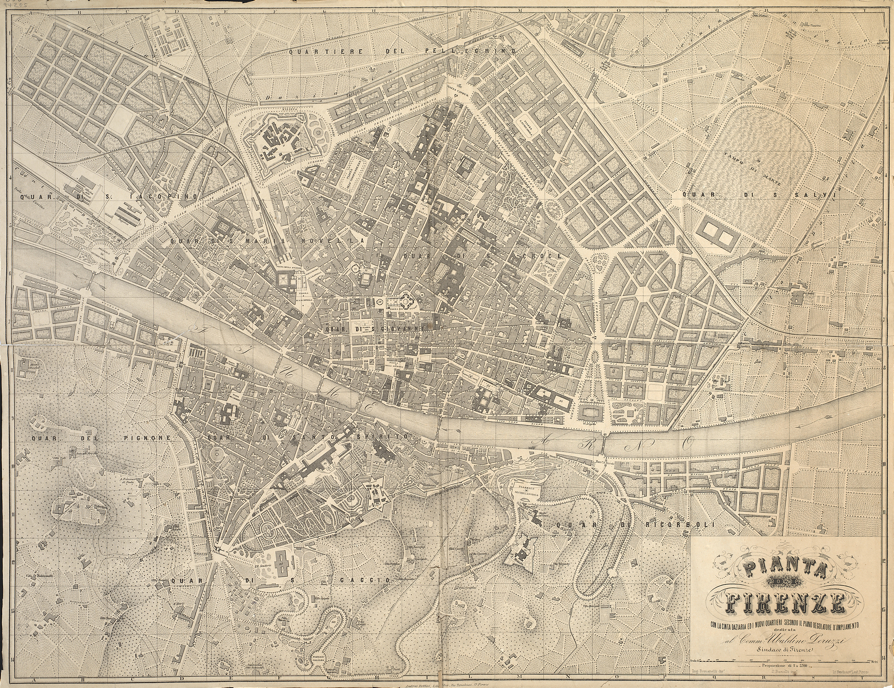
After Italy’s Unification, Florence underwent enormous changes, especially from 1866 onwards when it became capital of the Kingdom. The status of capital, held until 1871, had a significant impact on different aspects: on the one hand, Florence had to incorporate the complex bureaucratic apparatus of the kingdom, on the other it had to widen the structural and cultural boundaries of the town that had lived until then in a stable continuity with its Medieval and Renaissance imprint. Several urban developments were carried out (e.g. the Poggi Plan) in order to receive more than 50.000 people, most of them from Piedmont, that would significantly influence Florence’s social and cultural life.
The growth of the population affected also the development of musical life. Production increased and diversified to meet the new demand, namely a growing need of light and easy entertainment. Above all, this new tendency impacted the theatre industry: the social geography of the theatres was radically transformed by the opening of two new spaces (Teatro delle Logge, 1868, and Teatro Principe Umberto, 1869) and by a new artistic proposal. The network of the small theatres became the principal pole of attraction, compared to the more traditional theatres: the addition of new works to their seasons (particularly operettas, vaudevilles and variety) was in fact able to respond better to the demands of a new audience.
The glorious era of Florence’s theatrical life lasted only for the years of the capital. When part of the population moved to Rome (the new and final capital of Italy), many theatres suffered a dramatic crisis and most of them were forced to shut down.
The many musical societies active in Florence way before its designation as Italian capital suffered a different trend: among these, the Società del quartetto and the Società per lo studio e l’esecuzione della musica classica. Once the main actors of musical life in Florence and beyond, the music societies lost their prominence from 1866 onwards. Most of them had to fight against the dispersion of a regular foreign audience and against the relentless competition of the smaller theatres. Only in the years following the capital’s transfer, they regained their original prestige, thanks to the creation of new institutions (the Società corale Cherubini, for example), thus invigorating the sector of instrumental and choral music.
Apart from the theatres and music societies, the late 19th-century musical milieu in Florence was enlivened also by the cafés and their small orchestras (Gilli, Bottegone, La Rosa, Le Stanze Etrusche, Doney, Leone d’Etruria, Giappone, Le Alpi and so on) and by the parks (Cascine Park and Tivoli Gardens). As in many other modern European capitals, a new trend started growing: people listened to and enjoyed music in open-air spaces, passageways, outside the official institutions, and in a private home environment.